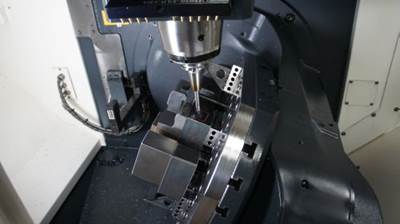4 Lessons To Learn Before Transitioning Ownership of Your Business
You owe it to your family, your employees and your customers to ensure that ownership changes in the future are prepared for well in advance.
Share









Autodesk, Inc.
Featured Content
View More
Have you ever asked yourself the question, “If tomorrow I were gone, what would happen to my business?” For those of us who own a business, it’s a daunting question that most would rather not think about. But it’s an important question to answer.
Your business provides great value to the customers who rely on you to help them succeed. Your team members depend on your business to support their lives and their families. The economy grows and expands when your business thrives and you manage it well. Wouldn’t you want to have a plan in place that protects and nurtures all of these things? Tossing the keys to your business over your shoulder on the way out the door isn’t a good plan; yet this could happen if life takes a curve and we’ve forgotten to plan ahead.
I’d like to share four important lessons I’ve learned firsthand as I’ve worked through transitioning into the ownership of my family’s business as a second-generation owner.
Lesson 1: Time is your best friend
One thing I learned quickly was that it’s never too early to start planning your transition out of ownership. None of us know what tomorrow will bring or what challenges lie ahead, so it’s best to start as early as you can. My father started working on a plan 10 years prior to his expected retirement, and it took over a year of meetings and documentation before the transition plan was formalized and put into action.
Even if you’re not ready to pull the trigger just yet, it is wise to start asking yourself some probing questions: How much longer do I want to own my business? What do I want my transition out of ownership to look like? How would that transition impact my estate and family as a whole? Clarifying answers to these questions will help prepare you for when the time comes to begin formalizing your transition out of ownership and into retirement.
Lesson 2: Have a formal, documented plan
This isn’t the time for a handshake and a simple one-page document. Having a formal, structured plan is imperative to a smooth period of transition. Every year I have specific business goals I need to meet and various parts of my job that I need to delegate to others so I can grow and expand into my new role in the company. A transition plan needs to account for these things.
While there have been slight tweaks to our own documented plan since we started, the overall structure and execution of the plan has provided a clear and decisive path forward for me as I transition into ownership and for my father as he transitions out. This activity can quickly become both tedious and daunting, but it promises to provide a solid foundation and is one of the most crucial steps of any transition plan.
Lesson 3: Hire a professional

Tyler VanRee and his father sign ownership transition documents for the first time. Since then, the documents have been regularly assessed by a professional in light of the business and revised as needed.
Neither your online researching skills nor even a generic family attorney are going to cut it here. Hiring someone with experience in the multiple facets of selling a business is a key ingredient to ensuring a smooth transition. After all, selling your business would most likely be the largest financial transaction of your life.
While attending a few local seminars related to retirement planning and selling a business, my father met and ultimately contracted with Mark Andresky from Performance Business Advisors LLC. He was able to help my parents work through various transition options, overall estate planning, tax implications and placing a dollar value on the business, ultimately helping to craft the formal transition plan that we use today. Our business attorney and CPA also provided wise counsel at various points along the way. Each year as we execute the transition plan, we still meet with Mr. Andresky, who assesses the business and provides an updated evaluation to keep everything current. Having an experienced professional to answer questions along the way as well as to provide accountability has been an invaluable resource as we execute the transition plan.
Lesson 4: Start over
In one of the first meetings we had with the transition planning professional, he looked across the table at me and said, “Once your dad’s transition is complete, you need to start thinking about yours, too.” It took me off guard, but the more I thought about it, the more I came to realize he was right. Being younger doesn’t eliminate my responsibility as an owner to have a plan for the business should I become unable to lead it. I owe it to my customers, I owe it to my team and I owe it to my family. The great example of diligence and preparation that my parents set for me is one that I plan to follow into my years as an owner — and I would recommend you do the same.
About the Author
Tyler VanRee
Tyler VanRee currently serves as vice president of Legacy Precision Molds Inc., which specializes in the manufacture and service of high precision plastic injection molds.
Read Next
Five-Axis Blends Require Minding Ballnose Tolerances
Proper symmetry, expressed via the end mill’s diameter and radius tolerance, is critical to ensure smooth surface finishes during five-axis contouring operations.
Read MoreRegistration Now Open for the Precision Machining Technology Show (PMTS) 2025
The precision machining industry’s premier event returns to Cleveland, OH, April 1-3.
Read MoreBuilding Out a Foundation for Student Machinists
Autodesk and Haas have teamed up to produce an introductory course for students that covers the basics of CAD, CAM and CNC while providing them with a portfolio part.
Read More







































